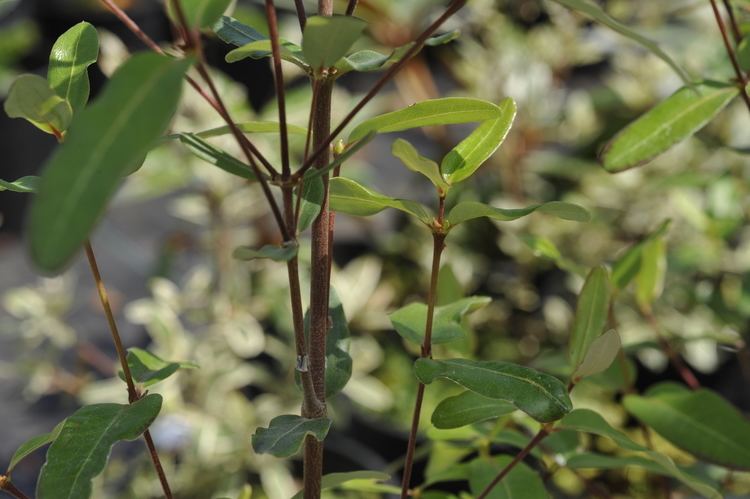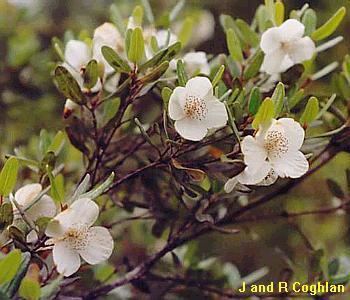Rank Species | Genus Eucryphia Higher classification Eucryphia | |
 | ||
Similar Eucryphia, Lophozonia cunninghamii, Atherosperma, Phyllocladus aspleniifolius, Eucryphia milliganii | ||
Eucryphia lucida, commonly known as leatherwood is a species of trees or large shrubs endemic to forests of western Tasmania. An attractive plant utilised in both the horticulture and apiculture industries, it was promoted by the Tasmanian Branch of the then SGAP as an alternative to the Tasmanian blue gum (Eucalyptus globulus) for Tasmania's floral emblem. It was described as E. billiarderi at one stage, this now being a synonym.
Contents

Description

Ranging from 2–10 metres (6–30 feet) in height, it can sometimes grow to 25 metres (80 feet) in favourable conditions. The small dark green glossy leaves are elliptical in shape and 2–4 cm (1-1.5 in) long. Appearing in spring and summer, the 2.5 – 4 cm diameter white flowers have four petals and resemble small single roses and have a strong fragrance, especially on warmer days. The flower parts are often covered with a sticky sap. Flowering is followed by leathery capsules which mature in autumn.
The species was first described in by Jacques Labillardière.
Distribution and habitat

It is widespread and common in moister forests in Tasmania, occurring mainly across the western parts of the state, from the northwest in such places as the Tarkine and through the South West Wilderness. It grows as an understorey plant and prefers wetter climates of 1500–2500 mm annual rainfall.

Fossil leaves from Early Pleistocene sediments at Regatta Point in Western Tasmania show similarities to E. lucida and suggest a close relationship.
Cultivation

Leatherwood is easily propagated by seed or cutting and makes an attractive garden plant. A fast-growing plant, it thrives in well-drained soil in a position with some shelter and extra moisture. It does require regular pruning to keep a neat shape. It is also utilized by Tasmanian beekeepers in the making of leatherwood honey, a noted monofloral honey that has been recognised by the international Slow Food movement in its Ark of Taste. For many years, the Tasmanian Beekeepers' Association has had to lobby the Tasmanian government to ensure continued access to this precious resource, and to protect it from logging.
Much of the leatherwood is difficult to access, growing deep within the forests of Tasmania's wild west coast. Beekeepers from the Tasmanian Honey Company camp in the forest during the leatherwood harvest, which occurs between January and March.
